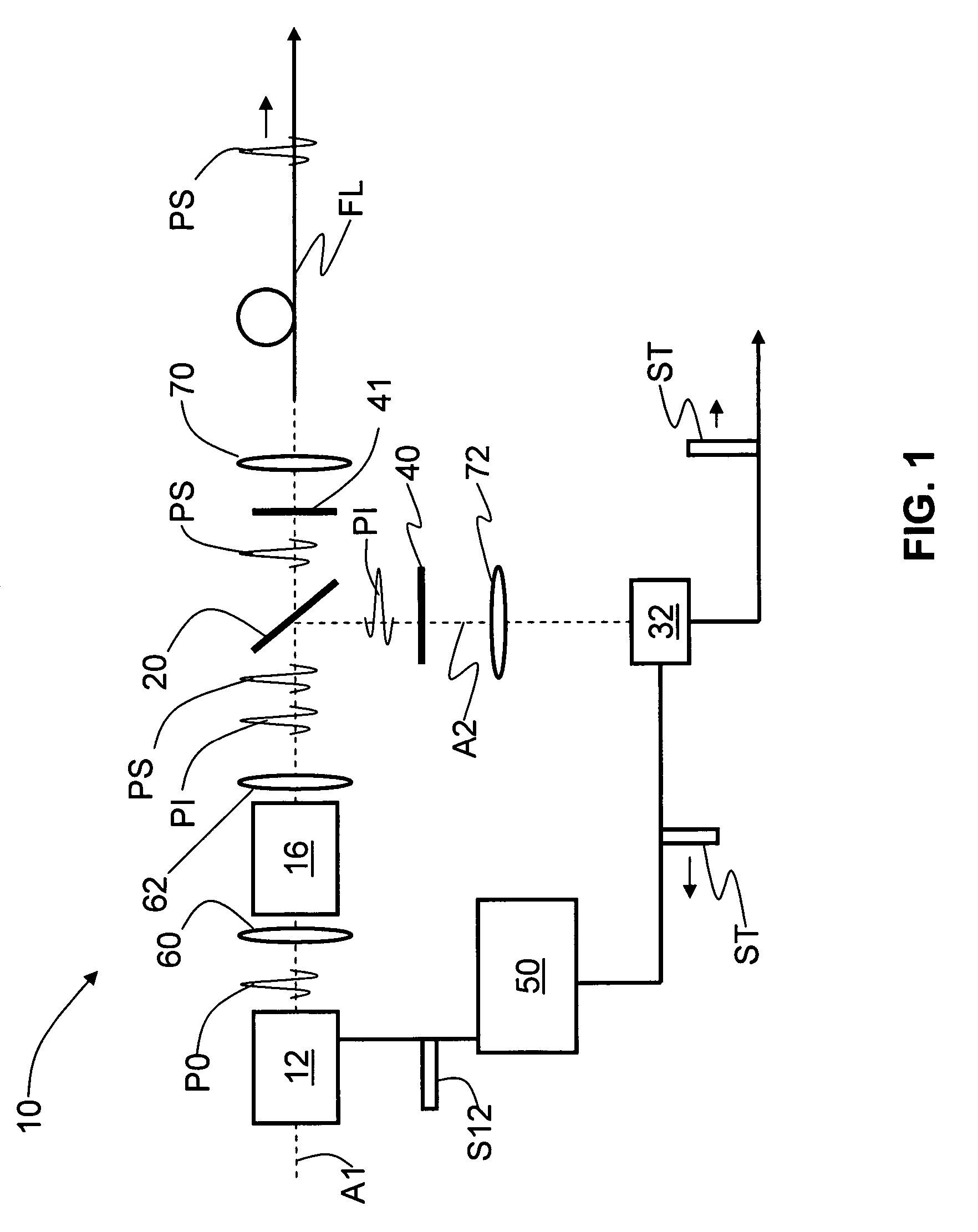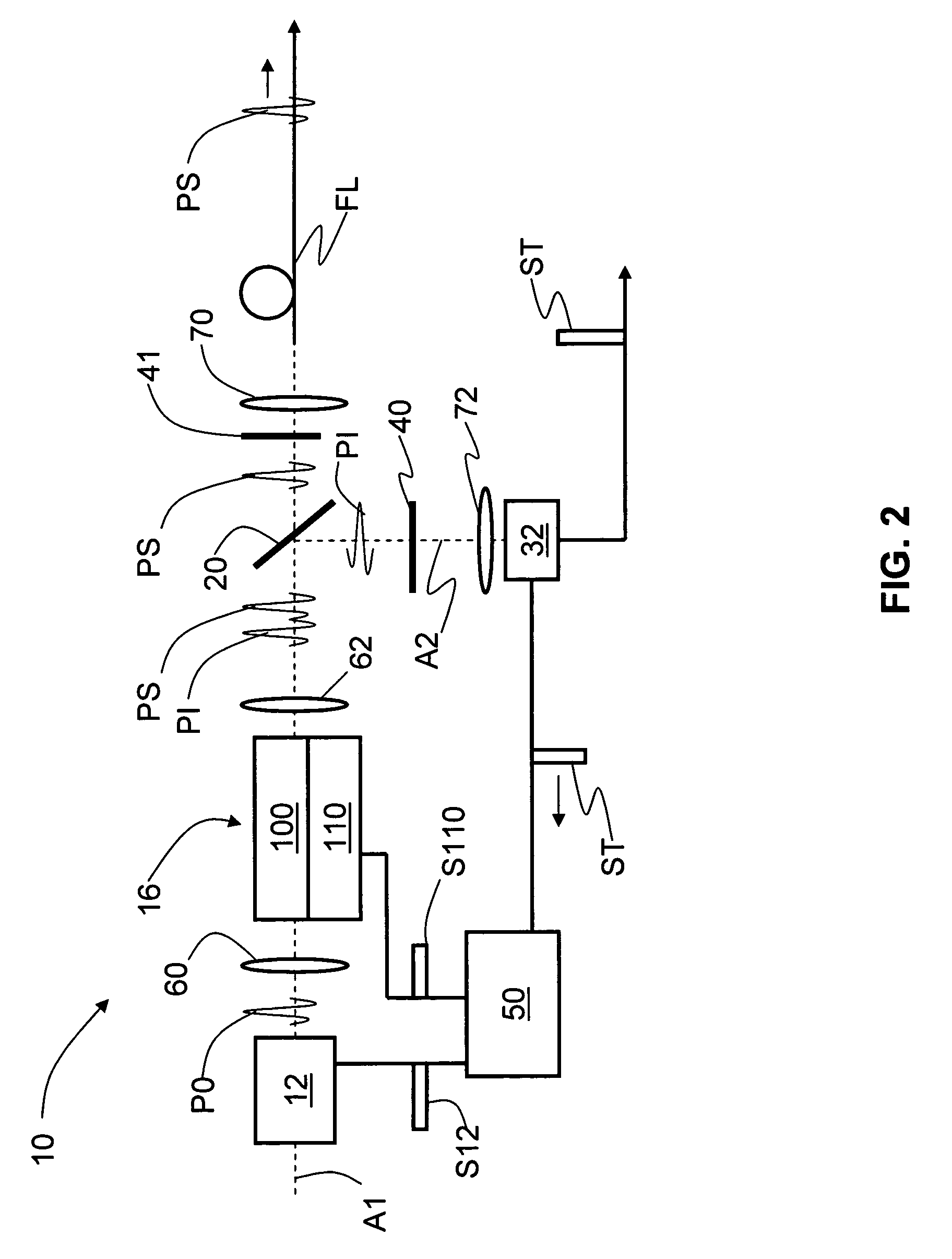Narrow-band single-photon source and QKD system using same
a single-photon source and narrow-band technology, applied in the field of single-photon sources, can solve the problems of high dark current, low quantum efficiency of single-photon detectors (spds) for this wavelength, and low quantum efficiency (10-20%), and achieve low quantum efficiency, low dark current, and low cost
- Summary
- Abstract
- Description
- Claims
- Application Information
AI Technical Summary
Benefits of technology
Problems solved by technology
Method used
Image
Examples
example embodiment
SPS Generalized Example Embodiment
[0019]FIG. 1 is a schematic diagram of a generalized example embodiment of a narrow-band single-photon source (SPS) 10 according to the present invention. Single-photon source 10 includes a pump light source 12 optically coupled to an optically non-linear medium 16 along an optical axis A1. Pump light source is typically a laser. Non-linear medium 16 is, for example, a nonlinear optical crystal, e.g. BBO, or periodically polled waveguide (e.g. LiNbO3, or a KTP). A wavelength-selective member 20, such as a dichroic beam splitter, is arranged along axis A1 downstream of non-linear medium 16 so as to be optically coupled thereto. Wavelength-selective member 20 creates an additional optical axis A2 different from (e.g., orthogonal to) optical axis A1. Axes A1 and A2 represent different optical paths over which the signal and idler photons travel.
[0020]A single-photon detector (SPD) 32 is arranged along optical axis A2 so as to be optically coupled to wa...
##s embodiment
Second SPS Embodiment
[0031]FIG. 2 is an example embodiment of a single-photon source according to FIG. 1, wherein non-linear medium 16 is in the form of a periodically poled waveguide 100 in thermal communication with a temperature controller 110. Temperature controller 110 is operably coupled to controller 50 and is controlled thereby via a control signal S110 in order to optimize conversion efficiency of the pump pulse P0 into signal and idler photons PS and PI.
QKD System with SPS
[0032]FIG. 3 is a schematic diagram of a QKD system 200 that includes the narrow-band single-photon source 10 of the present invention. QKD system 200 includes a first QKD station Alice optically coupled to a second QKD station Bob via optical fiber link FL. In addition to single-photon source 10, Alice includes a modulator MA operably coupled to the controller and adapted to impart a randomly selected modulation (polarization or phase) from a set of modulation bases to light passing therethrough. This op...
PUM
 Login to View More
Login to View More Abstract
Description
Claims
Application Information
 Login to View More
Login to View More - R&D
- Intellectual Property
- Life Sciences
- Materials
- Tech Scout
- Unparalleled Data Quality
- Higher Quality Content
- 60% Fewer Hallucinations
Browse by: Latest US Patents, China's latest patents, Technical Efficacy Thesaurus, Application Domain, Technology Topic, Popular Technical Reports.
© 2025 PatSnap. All rights reserved.Legal|Privacy policy|Modern Slavery Act Transparency Statement|Sitemap|About US| Contact US: help@patsnap.com



